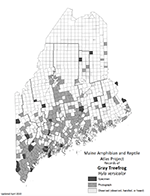Home → Fish & Wildlife → Wildlife → Species Information → Reptiles & Amphibians → Gray Treefrog
Gray Treefrog
Hyla versicolor
On this page:
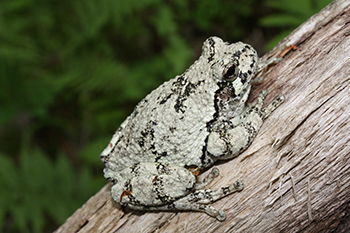
Photo: Trevor Persons
Distinguishing Characteristics
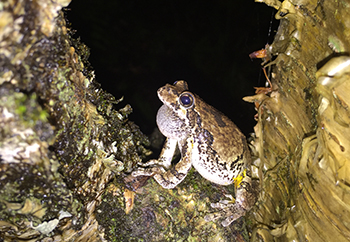
Photo: Trevor Persons
- Small to medium-sized; approximately 1.5 to 2 inches in length
- Usually gray, but varies from light green to brown. Juveniles are lime green
- Rough, warty skin
- White rectangular spot beneath each eye
- Underside of hind limbs is yellowish
- Toes with adhesive discs for climbing
- Commonly confused with spring peeper
- Breeding call is a short melodic trill
Status and Distribution in Maine
- Common and secure
- Southern, central, and eastern regions
- Heard more often than seen
Habitat
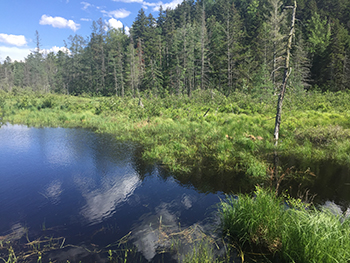
Photo: Trevor Persons
- Breeds in late spring in a wide variety of semi-permanent wetlands including marshes, deeper swamps, weedy pond coves, and beaver flowages
- Forested uplands (usually hardwood or mixed wood) in nonbreeding season
Diet
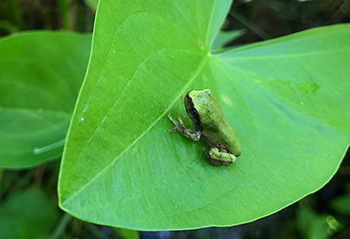
Photo: Derek Yorks
- Eats a wide variety of invertebrates including insects, snails, and spiders
Seasonal Changes
- Partially freeze tolerant; overwinters in the forest floor
Natural History Notes
- One of only two tree-dwelling frogs in Maine (with spring peeper)
- Can change color to closely match background substrate
Share Your Sighting
There is much still to learn about the distribution and ecology of Maine’s herpetofauna, and we encourage members of the public to share their photo-documented observations as part of the Maine Amphibian & Reptile Atlas Project (MARAP).
To see if a township still needs documentation of a species, consult this distribution map (PDF). If a township lacks a photo or specimen record, we want your observation!
There are two ways to share your observations:
Submit your reptile or amphibian observation online
No service? No problem. Click here to download the survey to your device while connected, then take offline to collect observations from anywhere. Tip: The survey works best on Google Chrome and Safari.
Or upload sightings to the iNaturalist citizen science project through their website at iNaturalist.org or mobile app.
- When submitting an observation through iNaturalist add a description of the location (and other noteworthy information) to the “notes” field. This serves as a check on the locations automatically generated by smartphone cameras, which may be imprecise if cell service or GPS coverage is weak.
Thank you for doing your part to help conserve Maine’s reptiles and amphibians.
